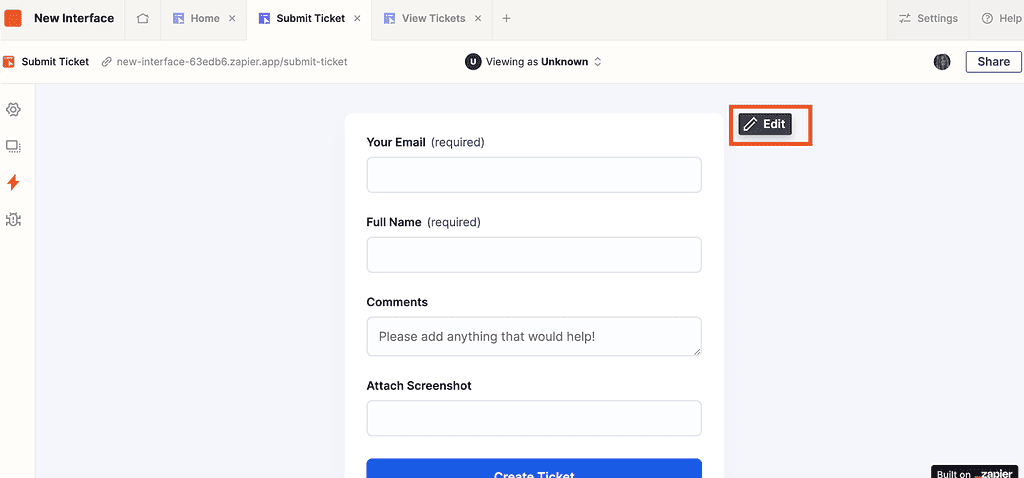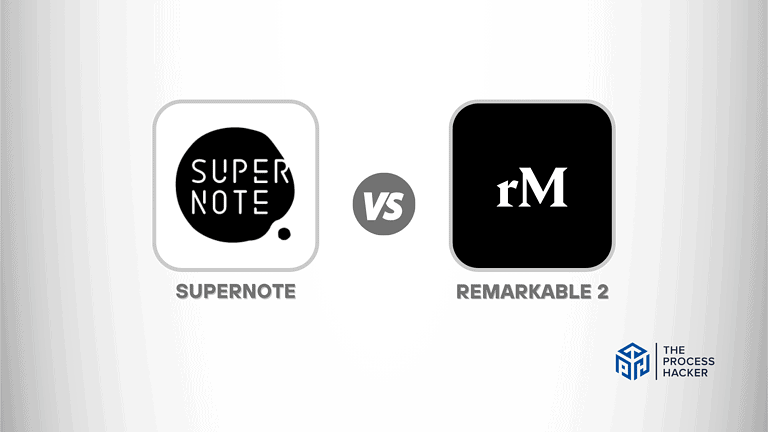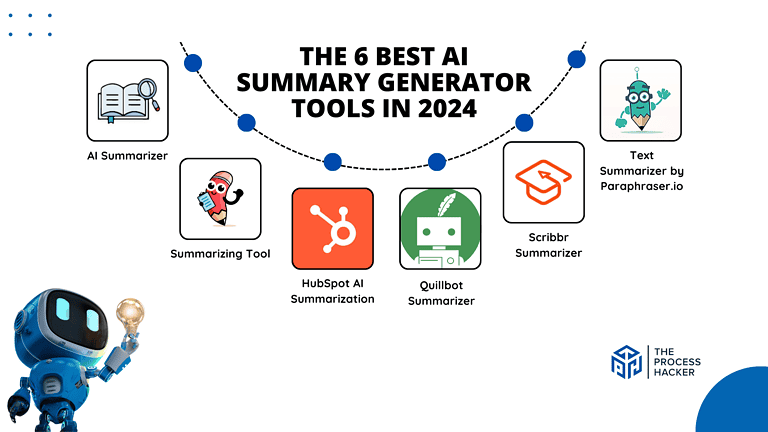Zapier Review 2024: Best No-Code Automation App?
As the world of business automation is constantly shifting and evolving, it becomes increasingly difficult for entrepreneurs to keep up with all the latest software available.
But if one app has consistently stood out in this ever-changing landscape, it’s Zapier.
With its wide range of capabilities, integrations, user-friendly interface, and powerful automation – not to mention its seven years of Zapier reviews – it remains a top choice for many. So you should check it out!
If you purchase through our partner links, we get paid for the referral at no additional cost to you! For more information, visit my disclosure page.
So, what makes Zapier so great?
In this Zapier review, I’ll show you how the app has evolved over time and uncover why millions trust this incredible app as their go-to workflow automation and integration partner.
Zapier Pros & Cons
First, we will explore the advantages and disadvantages of one of the leading business and productivity apps.
Pros
Cons
Zapier Pros
- Workflow Efficiency: With Zapier, automated tasks are a breeze. By creating what Zaps Zapier refers to as ‘Zaps,’ you can automate your monthly tasks, allowing you to focus on more critical aspects of your business.
- Extensive Integration: One of the biggest strengths of Zapier lies in its wide array of supported apps and integrations. Regardless of your business’s tools or platforms, Zapier makes it possible to connect them seamlessly.
- Repetitive Tasks Automation: Are you tired of doing the same tasks over and over again? Zapier allows you to automate these repetitive actions, freeing up your time and energy for more meaningful work.
- Easy-to-use Platform: Despite its powerful capabilities, Zapier maintains an easy-to-use platform that even those with little technical knowledge can easily navigate.
- Boosts Productivity: With all the time saved from automated tasks, Zapier users often report a 100% improvement in their productivity levels.
Zapier Cons
- Limited Customizability: While Zapier offers a wealth of pre-made Zaps Zapier, there may be instances where you need a more custom solution. In such cases, Zapier’s offerings may be limiting.
- Complexity with Multiple Triggers: For complex workflows involving multiple triggers, Zapier could pose challenges, especially for those with limited technical knowledge. However, these can be overcome with a bit of learning and persistence.
- Outdated Interface Design: Parts of Zapier’s interface feel outdated. While this does not hinder functionality, a more modern look could enhance user experience.
Quick Verdict – Is Zapier Worth the Money?
After countless hours using Zapier over the past year for myself and my clients, my verdict is a resounding yes: it is worth the money!
Zapier makes automation easy. From setting up simple to complex workflows (called Zaps) to integrating with multiple platforms, the app simplifies the process. The extensive list of native integrations means it can work seamlessly with almost any tool or platform your business utilizes. Hence, this is one of the best LinkedIn automation tools.
My personal experience with Zapier has been nothing short of amazing. I’ve been able to explore how to automate business and several tasks and transfer data that took up a significant portion of my day, allowing me to focus on more strategic aspects of my business.
You might think that such a powerful automation tool would come with a steep learning curve. However, that’s not the case with Zapier. Its intuitive and user-friendly interface makes it easy for even non-techies to quickly get the hang of it.
That said, no Zapier review would be complete without addressing some areas for improvement. Some parts of the user interface could use a refresh to give it a more modern look.
Also, while Zapier is excellent for simple to moderately complex workflows, it can get tricky when dealing with multiple triggers. This isn’t a deal-breaker, but something to be aware of if you plan to set up complex automation.
If you’re still on the fence about choosing Zapier, why not give it a try?
With a free trial, you can test its features and see first-hand how it can transform your productivity.
Who is Zapier for?
Understanding whether Zapier is the right fit for you or not depends on your specific needs and circumstances. Let’s break it down to help you decide.
You’ll love Zapier if:
- You’re overwhelmed by manual tasks: If you are bogged down by repetitive, tedious tasks that take up too much time, Zapier can automate these for you. It’s like having a virtual assistant that never sleeps.
- You use CRM software: Zapier integrates seamlessly with most CRM software. If your business relies heavily on CRM, Zapier can make it even more efficient by automating tasks such as data entry and lead tracking.
- You want to streamline complicated workflows: If you have complex workflows involving several apps, Zapier can simplify them. It allows you to create ‘Zaps’ that trigger multiple actions across multiple apps, saving you time and effort.
You won’t love Zapier if:
- You prefer manual processes: If you prefer doing things manually and have a small volume of tasks, then Zapier might be an overkill. It’s designed to save time on large-scale functions that are otherwise time-consuming when done manually.
- You don’t need advanced features: While Zapier offers many advanced features, they might not be necessary for everyone. If your operations are simple and don’t require complex automation, you might not find value.
- You’re not ready to integrate: Integration is at the heart of what makes Zapier powerful. If you’re not prepared to integrate your various apps or connect more tools that the app doesn’t support, it may not be the best fit for you.
What is Zapier?

Zapier is a no-code automation software tool that allows you to connect different apps. It’s like a digital bridge, linking your apps together and enabling them to communicate and work with each other.
What is the key benefit of having Zapier?
The key benefit of using Zapier is its ability to automate tasks and transfer data. By automating workflows, it saves you time and allows you to focus on more strategic aspects of your business.
Whether you need to track leads from your website, automate social media posts, or integrate your email with other tools, Zapier can handle it.
How does Zapier work?
Zapier allows you to build workflows, known as Zaps, which automate software tasks across multiple apps. Each Zap consists of a trigger and one or more actions.
When the trigger event occurs in one app, Zapier performs the action in another app. For example, receiving an email (the trigger) could automatically save the attachment to your Dropbox (the action).
How is it different from competitors or other business and productivity apps?
Its extensive catalog of Zapier integrations sets it apart from other similar tools. With over 2000 apps to choose from, chances are that whatever tools you’re currently using, Zapier can integrate them.
Additionally, while many other tools require coding knowledge to create complex automation, with Zapier, you can build workflows involving multiple steps with a simple, user-friendly interface. It is also one of the best AI sales tools in the market.
If you want to automate certain tasks, integrate your favorite apps, and free up more time for strategic work, consider using Zapier.
Reasons I Recommend Zapier to Everyone
As a regular user of Zapier, this software tool has transformed how I work. Here are three reasons why I recommend Zapier to everyone.
#1) Pre-Built Integrations for Repetitive Tasks
The first thing that struck me about Zapier was its number of pre-built integrations. With over 2000 apps in its arsenal, the unlimited number of automation possibilities are endless.
I’ll give you an example. I use a combination of ClickUp, Google Sheets, and ConverKit in my workflow. Before Zapier, managing tasks across these platforms was a headache.
But thanks to the pre-built Zaps, I’ve been able to connect these apps, saving me precious hours every week.
#2) It’s Cost-Effective, Especially for Task Automation
Now, I know what you’re thinking – “Isn’t Zapier a paid tool?” Yes, it is. But hear me out. The amount of time you save by automating your tasks with Zapier far outweighs the subscription cost.
In my case, I used to spend a significant chunk of my day performing repetitive tasks. With Zapier, I’ve automated most of them, freeing up my time to focus on more important aspects of my work. Looking at it like that, it is an excellent solution for boosting productivity.
#3) Packed with Useful Features
What makes Zapier stand out from the crowd is its constant evolution. They’re always adding more features and refining existing ones to meet the changing needs of their users. From multi-step Zaps to conditional logic, there’s a lot you can do with Zapier.
For instance, multi-step Zaps have been a game-changer for me. They’ve allowed me to automate complex workflows that involve multiple apps and steps. The level of customization offered by Zapier is truly impressive.
So, there you have it – my top three reasons for recommending Zapier. It’s a powerful, reasonably priced tool that’s packed with valuable features. To streamline your workflows and boost productivity, you should try Zapier.
Remember, this isn’t just a review – it’s a testimony from someone who uses Zapier daily.
What You Might Not Like about Zapier
Despite its many benefits, Zapier has some aspects that may not sit well with everyone. Here are a couple of things that I’ve found challenging.
#1) Learning Curve
Zapier is user-friendly but has a learning curve, especially if you’re new to automation software. Understanding how to create your Zaps and use different triggers and actions can take some time.
I’ve personally experienced this. When I started using Zapier, it took me a while to get the hang of it. Understanding all its capabilities and how to use them for my needs effectively was a challenge initially.
#2) Limitations with Free Plan
Zapier offers a free plan, but it comes with certain limitations. This plan only allows you to create single-step Zaps and restricts the number of tasks you can automate monthly.
This was something I faced when I began using Zapier. As a small business owner, I started on the free plan but quickly ran out of tasks. This was frustrating and made me realize that I would need to upgrade to a paid plan for more extensive automation.
So, while Zapier is an incredibly robust tool, it’s important to remember these potential downsides. Depending on your needs, it might take some time to learn, and the free tier might not offer enough functionality.
Zapier Pricing
Zapier, known for its no-code automation capabilities, offers a range of pricing options to cater to different user needs. At the heart of these options are the free and various premium plans.
The Free Plan
Zapier’s free plan is a great starting point for those new to automation or with minimal automation needs. It allows users to automate basic tasks and get a feel for the platform without financial commitment.
While the functionality is limited, it’s a good way to test the service and see if it fits your needs before moving to a paid plan.
However, it’s important to note that this plan has limitations. For instance, it restricts the number of tasks you can automate monthly. You might quickly outgrow the free tier if your automation needs are more extensive.
Premium Apps and Plans
For users looking for more advanced features and capabilities, Zapier offers several premium plans. These plans, ranging from the Starter plan at $19.99 per month to more comprehensive plans for teams and large organizations ranging from $49 to $69 and above, provide access to premium apps and allow for more tasks per month.
The premium apps available with these plans open up a world of possibilities for automation. They include popular tools like Slack, Kit, and Google Sheets, allowing for more complex and robust Zaps.
In conclusion, whether you’re a small business owner just dipping your toes into automation with the free version or a large team looking to streamline your workflows with premium apps, Zapier offers a range of options to suit your needs.
Zapier: Key Features Breakdown
Zapier is a comprehensive productivity app designed to connect web applications together, making it a great tool for boosting efficiency. Let’s delve into the details of its key features:
Connecting Apps
One of the core features of Zapier is its ability to connect apps. This feature lets you link two platforms and automate app-based tasks between them.
For example, you can connect your Google Calendar to Slack so that every time a new event is added to your calendar, Zapier sends a message to a designated Slack channel. This is just one example of the integration in action.
User Zapier to connect hundreds of apps, which enables you to automate more tasks than you could imagine. This feature has been an enormous time-saver. I no longer have to manually update multiple platforms, as Zapier takes care of it.
Trigger Events and Associated Actions
Zapier operates based on a ‘trigger’ and ‘action’ system. A trigger event in one app prompts an associated action in another. For instance, receiving text messages can be set as a trigger event, with the action being to save the text messages in a Google Sheet.
The beauty of this feature is that it can handle multiple steps and actions from a single trigger, allowing for complex workflows. In using Zapier, I’ve found this feature particularly beneficial for managing tasks involving numerous activities across other apps. It saves time and reduces the chance of missing important steps.
Integration and Automated Tasks
Zapier’s native integrations are vast, supporting over 2000+ applications. This broad integration range makes it a powerful tool for businesses of all sizes.
The automation feature of Zapier is its standout point. Once you set up a Zap (an automated workflow), the app will continue running it for you, saving you from tasks you repeatedly do. This feature has transformed my work, freeing up my time to focus on more strategic tasks.
Unlimited Multi-Step Zaps
Another impressive feature of Zapier is its ability to execute an unlimited number of multi-step Zaps. You can automate multiple tasks across different apps from a single trigger.
For example, receiving an email in Gmail could trigger actions like saving the attachment to Dropbox, adding a task in Trello, and sending a notification in Slack. This feature enhances productivity by ensuring all associated tasks are handled simultaneously.
Data Privacy and Protection
Zapier values your privacy and follows a short-period data retention policy. This means that it only holds onto your task history for a limited time, reducing the risk of any potential data breaches. It’s a feature that gives me peace of mind, knowing that my data isn’t stored indefinitely.
Zapier Paths
Zapier Paths is a feature that allows you to create conditional workflows. Based on the trigger event’s details, it can perform different actions.
For instance, an email from a particular client could be labeled differently in your inbox. This feature has enabled me to create more personalized and efficient workflows.
FAQs about Zapier
In this section, I have compiled a list of frequently asked questions about Zapier to provide more information about this automation tool.
What is a Zap?
A Zap is an automated workflow that connects your apps and services together. Every Zap consists of a trigger step (“when this happens…”) and one or more action steps (“do this…”). This allows you to automate repetitive actions without the need for coding skills.
What response type does Zapier expect?
Zapier works with JSON-formatted responses. If you’re building an app on Zapier’s platform, ensure your API returns data in the expected format to avoid errors like “An array is expected.”
Is an account required to use Zapier?
Yes, to use Zapier, you need to create an account. You can sign up for a free trial account or opt for one of the paid plans.
How are videos uploaded with Instagram and Zapier handled?
Videos uploaded to Instagram via Zapier are typically treated as regular posts. The specifics of how they are handled can depend on the settings of your Instagram account and the specific workflow you’ve set up.
Final Verdict – to Buy Zapier or Not to Buy Zapier?
Connect All Your Apps Together with No Code!
Zapier is the best app for connecting all of your other AI marketing tools together. You can automate tasks, move data, and connect apps with triggers!
After thoroughly analyzing various reviews and user experiences, I recommend a resounding yes – buy Zapier.
Why? Let’s recap the points made throughout this article:
Zapier stands out for its ease of use, even for those without extensive coding knowledge. This means anyone can automate tasks and create efficient workflows with just a few clicks.
Furthermore, it provides excellent instructional and support options, ensuring you’re always aware of how to make the most of its features.
Regarding performance, Zapier can run as fast as real-time and offers impressive tasks with its paid options. It’s more robust than its competitors and has fewer errors on the back end, making it a reliable automation tool.
Moreover, Zapier is praised for its capacity to support almost every app you might use, making it a versatile tool for any current business. Its feature to require all necessary data fields for a task while offering additional ones as options contributes to its ease of use and efficiency.
However, no product is perfect. While Zapier offers a free version, one of the paid plans is necessary to unlock its full potential. This could be a point of contention for some users, especially those on a tight budget.
But considering the time and effort it can save in automating tasks, many users find the investment worthwhile.
Therefore, if you’re looking for a tool to streamline your business processes and increase productivity, don’t hesitate to try Zapier. Start with their free trial and see the difference it can make in your daily tasks.
As we move forward, let’s explore some alternatives to Zapier if you’d like to compare and find the tool that best fits your needs.
Zapier Alternatives
If $19 to $69 and above is too much for you to stomach right now, or you need a different solution, you might like one of these alternatives.
#1) IFTTT
IFTTT is a free web-based service that allows users to create chains of simple conditional statements called “applets,” which are triggered based on changes to other web services such as Gmail, Facebook, Instagram, and Pinterest.
Compared to Zapier, IFTTT focuses more on personal use and less on business and professional integrations. It’s a simpler, user-friendly option for individuals wanting to automate their digital tasks.
However, it lacks the depth and breadth of native integrations that Zapier offers, making it less ideal for complex business processes.
#2) Make
Make, formerly known as Integromat, is another popular Zapier alternative. It offers a visual builder for automated workflows, similar to Zapier. However, Make allows you to build more complex, multi-step automations with conditional logic.
While Make does offer a free plan, its paid plans tend to be cheaper than Zapier’s, making it a solid choice for those on a tight budget. However, its interface might be harder for beginners to navigate than Zapier.
#3) Automate.io
Automate.io is a cloud-based integration platform that connects various cloud applications and automates marketing, sales, and business processes. It’s an excellent option for businesses looking for a robust automation tool that’s still easy to use.
Compared to Zapier, Automate.io provides a similar range of app integrations but stands out with its more detailed reporting features. This can be a big plus for businesses that need to track the performance of their automation workflows. However, it doesn’t support as many apps as Zapier does.
#4) Workato
Workato is a powerful automation platform that allows users to seamlessly connect their applications, automate workflows, and streamline their business processes. With Workato, users can create customized integrations between different apps without needing any coding knowledge.
Compared to Zapier, Workato offers a more comprehensive set of features, including advanced data mapping and transformation capabilities. This is especially beneficial for businesses that deal with complex data structures.
#5) Pabbly
Pabbly is another popular automation tool that offers a user-friendly interface and advanced features for businesses of all sizes. With Pabbly, users can easily connect their applications and automate workflows without requiring any technical skills.
Unlike Zapier, Pabbly also offers unlimited tasks and integrations, making it a cost-effective option for businesses with multiple automation needs. Additionally, Pabbly’s dashboard allows users to monitor their automations in real-time and track the performance of their workflows.











